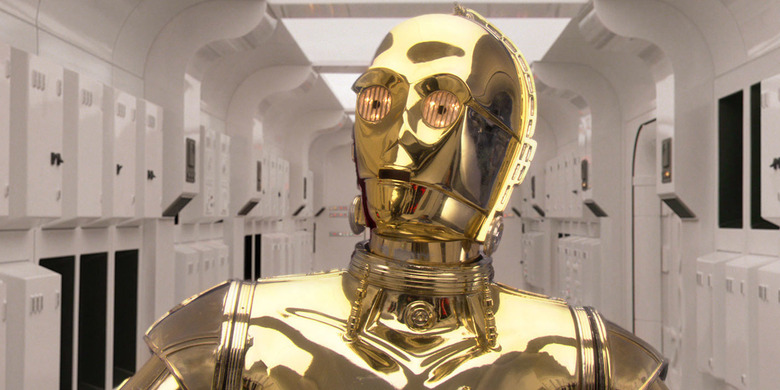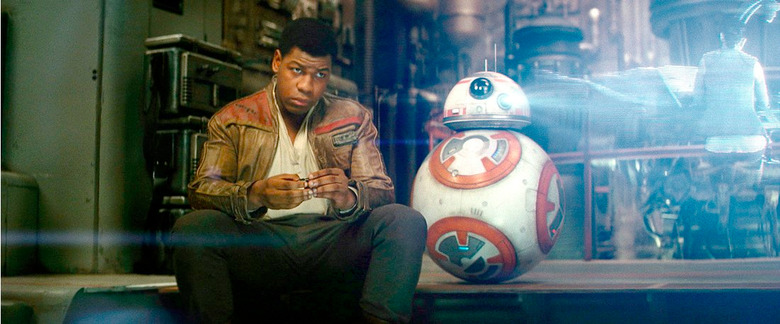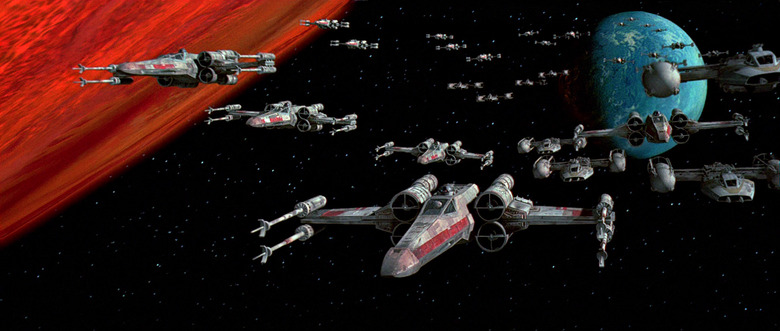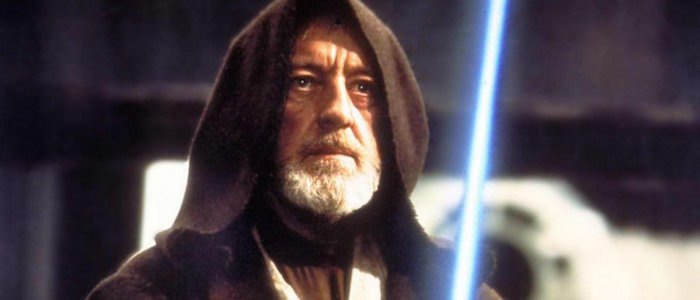How A Canadian Short Film Inspired George Lucas To Make 'Star Wars'
(Welcome to The Movies That Made Star Wars, a series where we explore the films that inspired George Lucas' iconic universe. In this edition: the experimental short film 21-87.)
When George Lucas was off at film school at the University of Southern California, he was exposed to all manner of film, from the mainstream to the experimental. One of the films that made the most profound impact on him was a short film from Canadian filmmaker Arthur Lipsett called 21-87. Clocking in at just over nine-minutes, the film might superficially seem to be a random collage of images and sounds, but these juxtapositions chosen by the filmmaker add up to create an overwhelming sense of emotion that is sure to cause deep, existential questions in viewers.
Walter Murch, a fellow student and future collaborator of Lucas', said that when Lucas saw 21-87 for the first time, "a light bulb went off."
Lucas himself told biographer Dale Pollack of the film, "I said, 'That's the kind of movie I wanted to make' — a very off the wall, abstract kind of film. It was really where I was at, and I think it was one of the reasons I started calling most of my college movies by numbers. I saw that film twenty or thirty times."
The Earliest Influences
There's little doubt the film influenced Lucas' earlier works, like THX-1138 and American Graffiti. The soundtrack to 21-87 has discussions of humans being complex machines and featured shots of automata performing simple tasks. The film also features shots of cars driving and kids from the '60s dancing. Thoroughly knowing Lucas's work and visiting 21-87 for the first time, you can almost see where the gears in his head began turning.
As far as Star Wars is concerned, 21-87 holds many inspirations. Aside from the number itself – which we'll get to in a moment – the first thing one will notice directly is a shot of a man on the street in a light colored suit moving just like C-3PO. He looks like the sort of used-car salesman that George Lucas first described the droid as, and he is literally doing a robot dance. Whether Threepio was a direct reference to this or just an evolution of its influence on Lucas is unclear, but the similarity is striking nonetheless.
Another striking similarity is how 21-87 features the flayed and charred remains of a human, just like Uncle Owen and Aunt Beru's final fate in A New Hope. There are other shots in 21-87 that evoke people on fire and the horrors of war. For a film like 21-87 that might seem a random juxtaposition of images, it seems to say more the more you take it in, and the existential themes of Star Wars and many of those images found their way into Lucas's legacy.
A Numbers Game
The title of the film was obviously important enough to George Lucas that the numbers 2187 appeared in both THX-1138 and the original 1977 Star Wars. In A New Hope, Princess Leia's trapped in cell 2187. Taking the theme of the short film and applying it metaphorically to the prison Leia is in, we can know much more about what Lucas was trying to say about the theme of Star Wars. He never seems to make a reference just to make it – it's always laced with added meaning.
You can see hints of the man versus the machine themes that are on full display through the Star Wars movies. That extends past Lucas's tenure on Star Wars as well, as JJ Abrams and Rian Johnson carried the influence forward. It's not a random coincidence that the symbol of Finn's lack of individuality in the eyes of the First Order is his designation: FN-2187. On the surface, it might seem merely like a clever reference to Princess Leia in A New Hope, but taking that influence a step further, you can see a larger meaning at work.
Rian Johnson takes it one step further, having Benicio Del Toro's character DJ talk specifically about that "machine" that chews people up and spits them out, giving Finn even more to think about on his journey.
Aural Qualities
If you were to close your eyes and simply listen to 21-87, you would notice that the aural quality of the piece is something that Lucas worked to recreate in his films. Lucas spent his career up to Star Wars emulating 21-87's use of soundscape to create unique visions of the world. THX-1138 recreates the dead space of 21-87 and the audio workings of machines in a way that seems novel, but it's all rooted in what Lucas saw in 21-87. In American Graffiti, Lucas's second film, he applied these techniques in an even more sophisticated way, making the soundtrack a character by keeping all of the music recorded from the source of the picture, rather than an overlay.
But in the original Star Wars film, perhaps no sequence captures the kinetic audio space that 21-87 embodies more than the Battle of Yavin. Characters speaking dialogue all have their lines coming from whatever source we see in the picture's frame, even if that frame shifts mid-sentence. Without the influence of 21-87, it's easy to wonder if this sequence would have been half as effective.
Some All-Powerful Force Controlling Everything
As important as some of the imagery, sound, and the title were to Star Wars, the biggest impact might have been 21-87's influence on the Force itself. During the film, Lipsett included a conversation between Warren S. McCullough, an artificial intelligence pioneer, and Roman Kroitor, a cinematographer and co-founder of IMAX. In the film, McCullough asserts explicitly that humans are nothing more than machines, to which Kroiter responds, "Many people feel that in the contemplation of nature and in communication with other living things, they become aware of some kind of force, or something, behind this apparent mask which we see in front of us, and they call it God."
When Wired asked Lucas if this exchange was the inspiration for the Force, Lucas explained that it sort of was. It was "an echo of that phrase in 21-87." But he added the caveat that, "similar phrases have been used extensively by many different people for the last 13,000 years to describe the life force."
The Love of the Challenge
It's impossible to understate the influence 21-87 had on George Lucas's general sensibilities as a filmmaker. Lipsett set out to create an emotion with 21-87 like one would put a puzzle together. He put bits of footage he found on the editing room floor alongside footage he created himself and layered bits of audio and conversation over it in a way that shouldn't work, but does. Masterfully, so. Lucas became fascinated with that sort of filmmaking.
When I interviewed Lucas for the release of Strange Magic, I asserted to him that coming up with complicated ways to make a movie was a part of his 'director's thumbprint.' He agreed, "I like the challenge of, one, doing things that hadn't been done before, telling stories in ways other people haven't thought of before, having interesting combinations of things that are seemingly impossible, but making them work. Then, on top of that, being able to tell a story in a very entertaining way."
One could say that the challenge Lucas gave himself was to take the method of making films like 21-87 and make them commercially viable and entertaining.
Can you think of a better film that exemplifies that more than Star Wars? Lucas used bits of World War II films for the FX teams to emulate and puzzled together the special effects that made Star Wars remarkable on scale no one ever had before. 21-87 was one of those stepping stones that led Lucas to become the pioneering filmmaker that brought us Star Wars.
21-87 is the sort of thing anyone interested in the history of film and Star Wars should see. Watching it after George Lucas's distilled versions of ad nauseum over the years is an electrifying experience.




